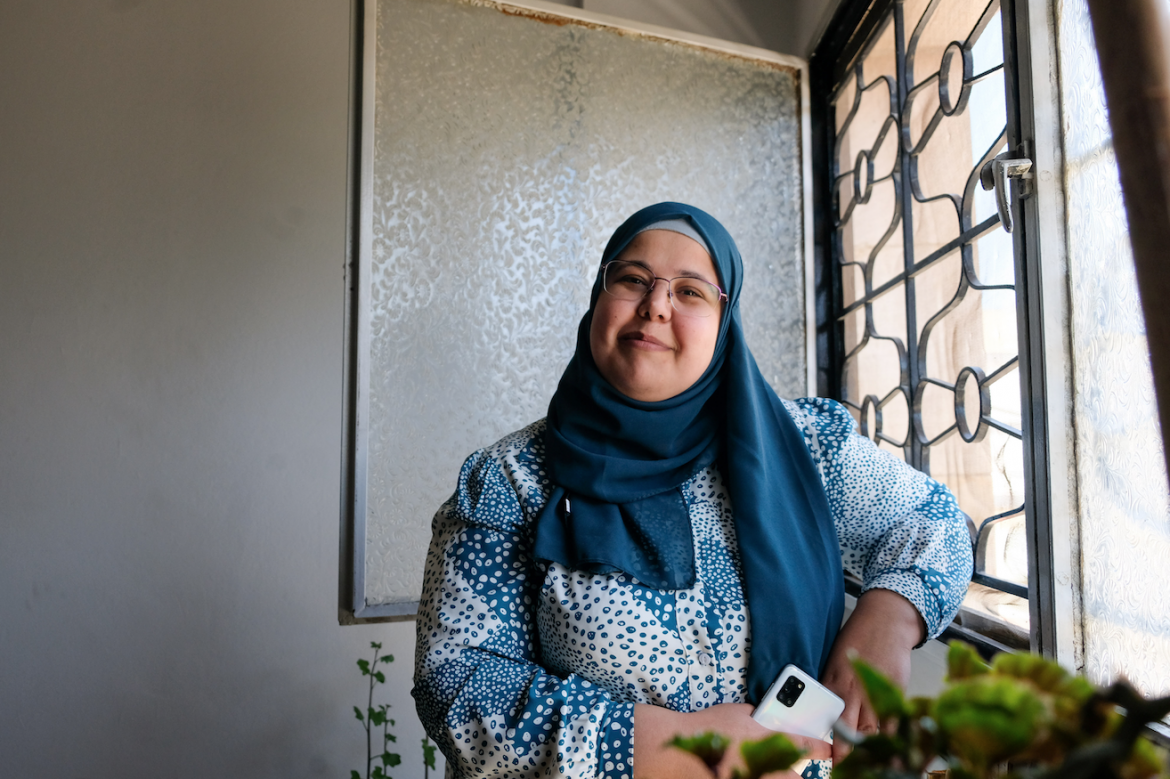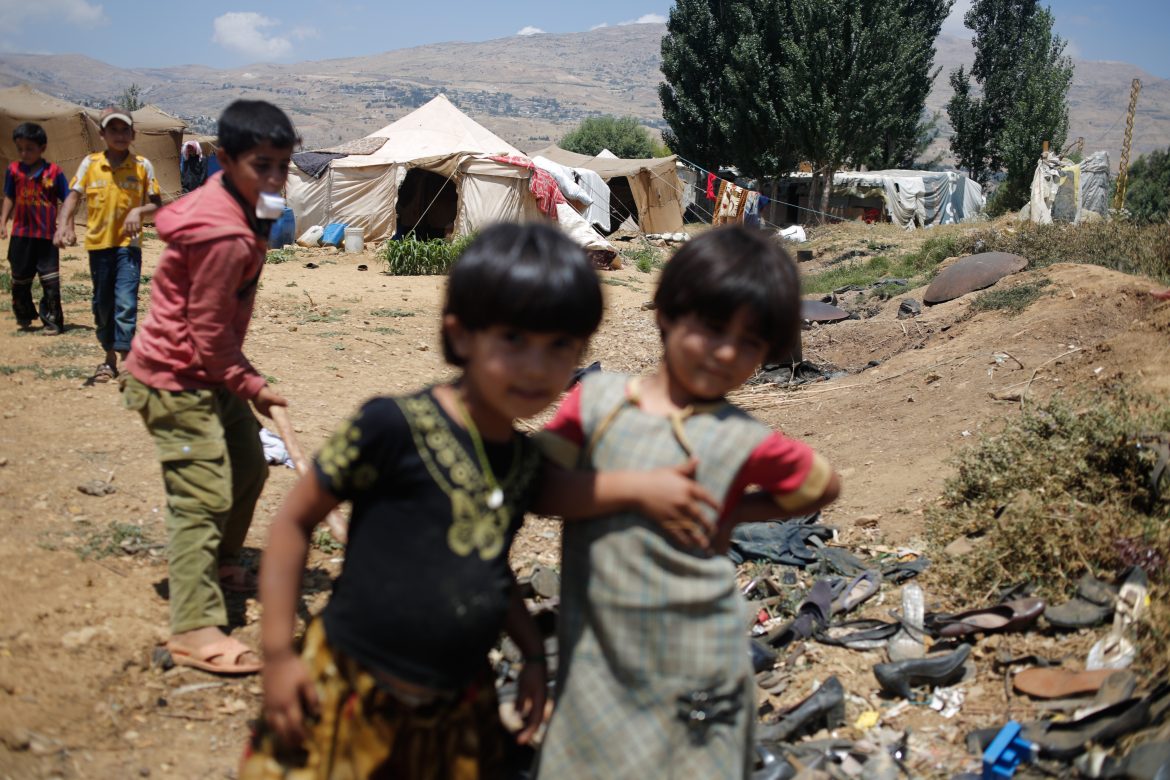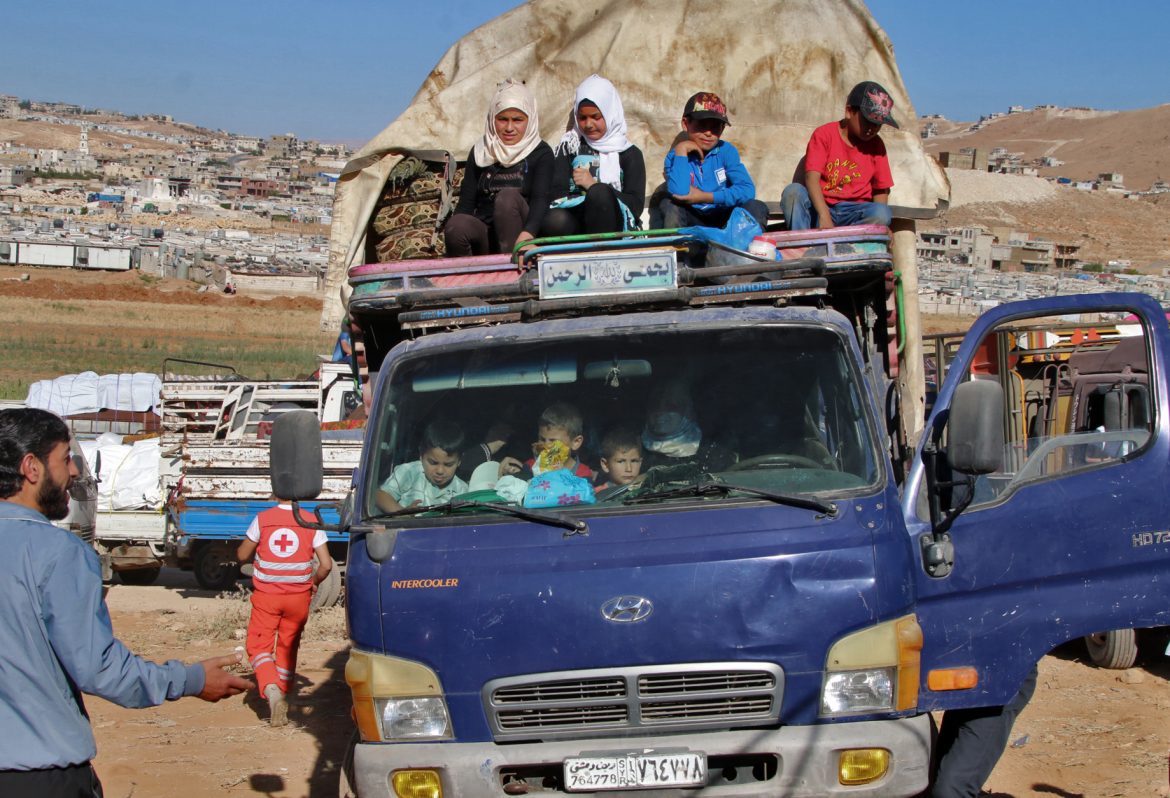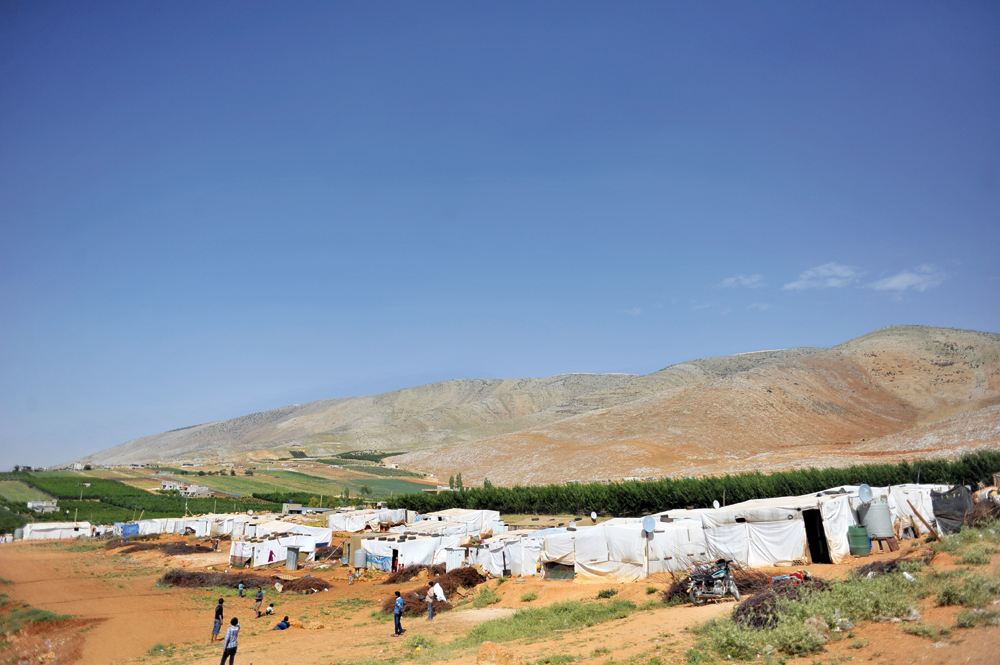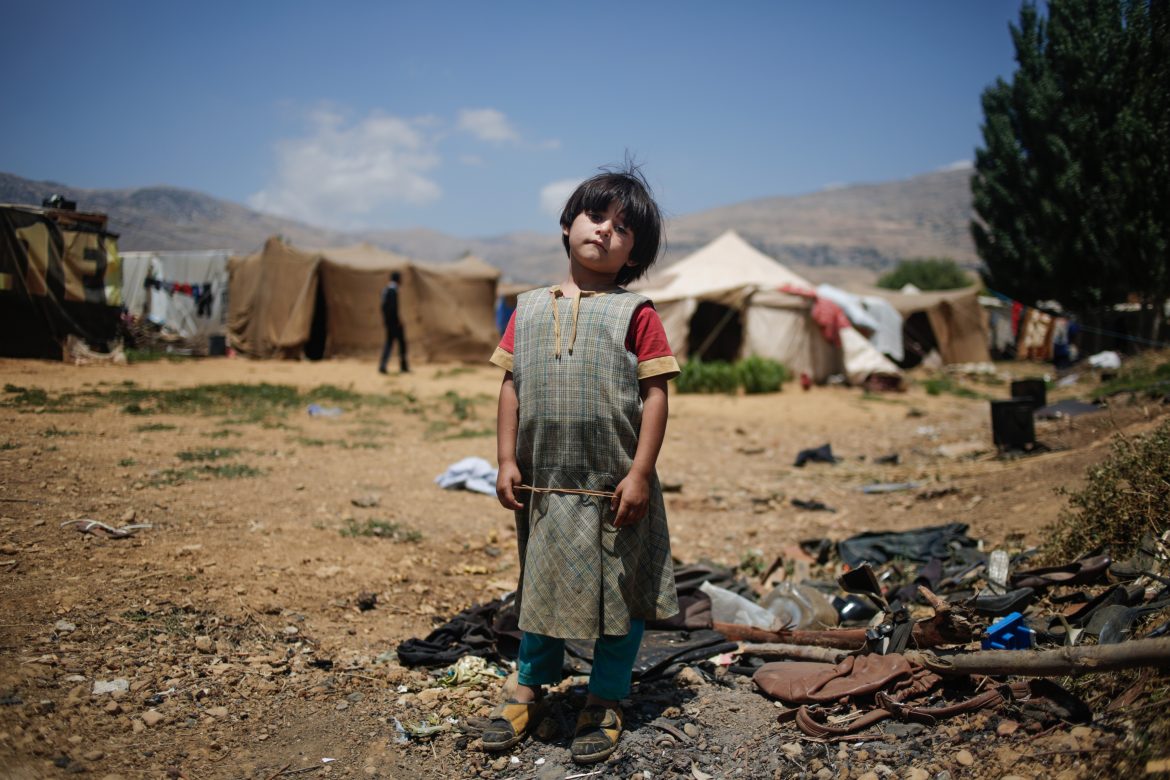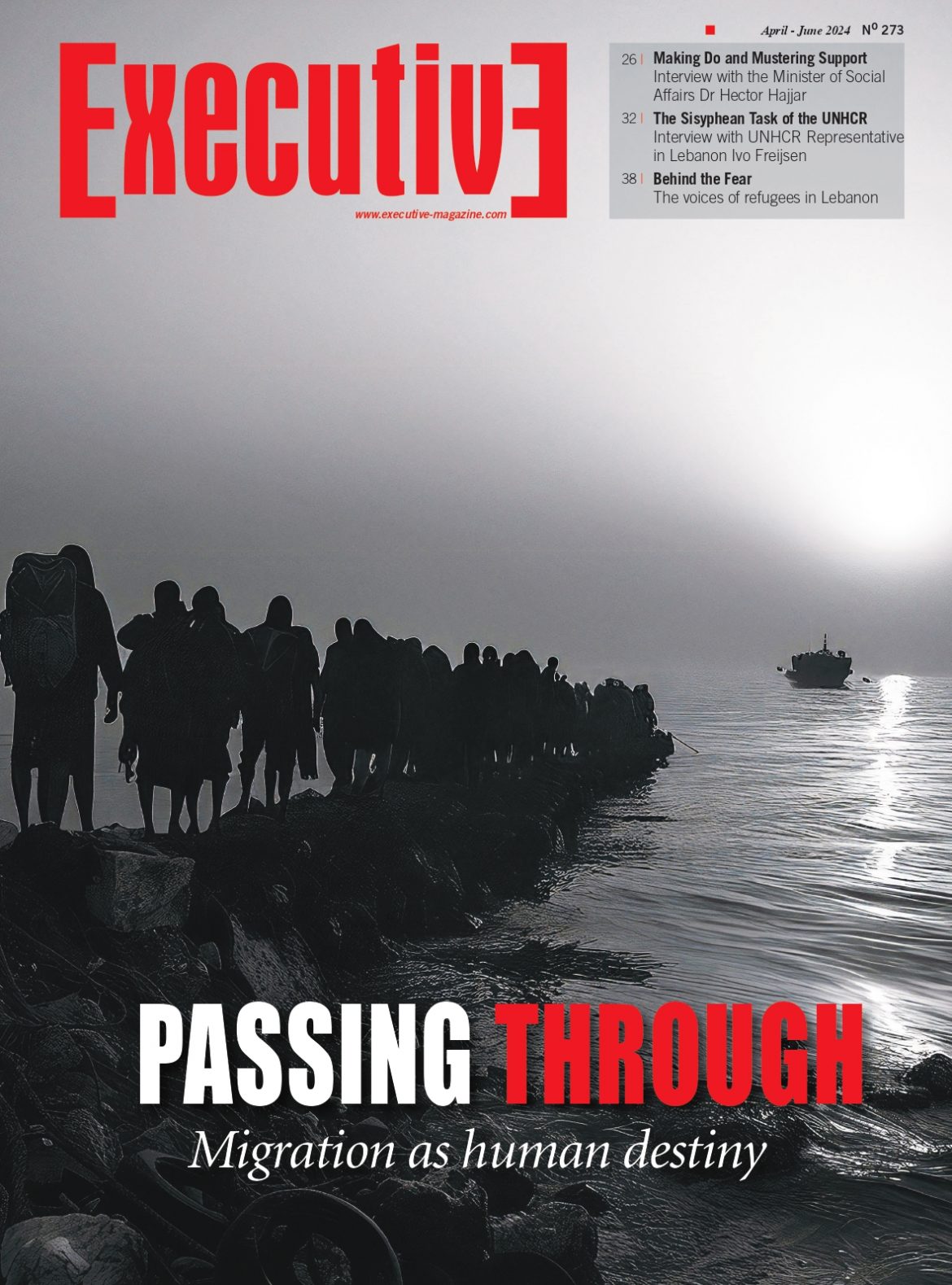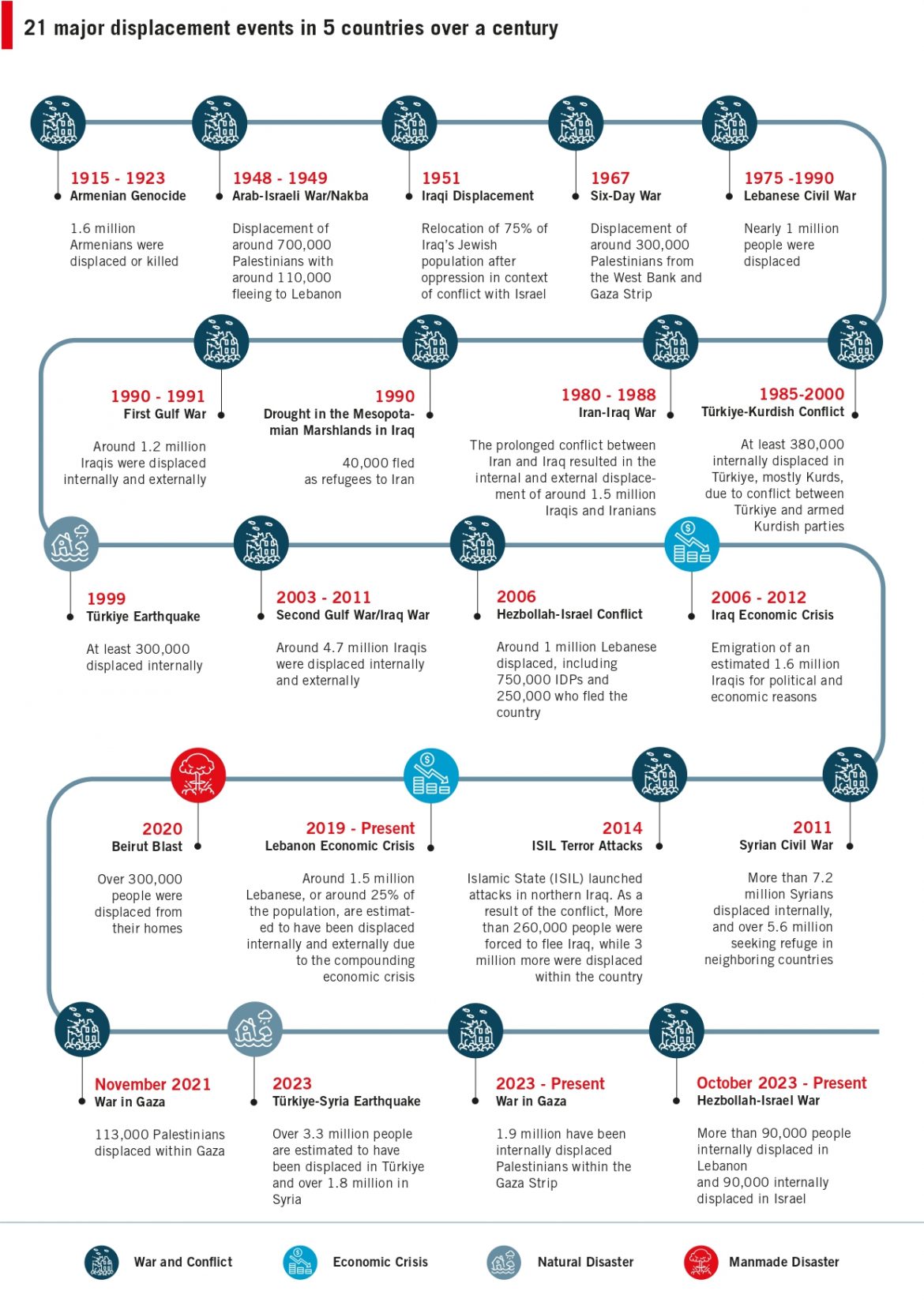It’s a sunny day in the Bekaa, early enough in spring for the snow to remain on the highest mountains. The road cutting through the valley is busy with trucks, vans, and cars. Near Chtoura, a man next to a parked car calls out, “Sham, Sham.” A small tuk tuk stops on the side of the road. Muzna Al Zohouri, a woman in her thirties, steps out.

Al Zohouri, a journalist and community expert on women and refugee issues from Al Qusayr in Syria, dedicates much of her time to social and volunteering activities, like supporting families and young people in the Bekaa.
“I always have a lot of things to do. But I like it, I like to be busy,” Al Zohouri says.
This morning, she heads to an area in nearby Saadnayel where families from Syria live in tents and simple dwellings. The small road that leads there is lined with fields on both sides.
As soon as Al Zohouri arrives, she sees a woman she met in project during the pandemic.
“It’s been such a long time, how are you?” she asks as they embrace.
There’s also a woman who came from Syria with her daughter only a few days ago, to quickly see her husband who works in Cyprus. This is the only chance for them to meet.

The women take out a saj and start preparing bread with homemade cheese and muhammara brought with the woman from Syria. Al Zohouri takes a seat next to the saj in order to catch the bread before they burn. The women smile, saying that she would make a good baker.

Then, they go to a field nearby, where a group of Lebanese and Syrians grow vegetables together. Each family has their own plot and decisions are taken together.

“We are 14 families, some have left and new ones have joined,” Safieh Al Assaf, one of the members, says.
She has been in Lebanon since the war in Syria started. But like many other Syrians, she first came to do seasonal work when she was a child.

“I remember walking into the field and the beetroot plants were taller than us,” she says.

Syrians have long been a key component in Lebanon’s agricultural economy, according to a 2019 BMJ Global Health study on Syrian displacement and labor in Lebanon, and in particular here in the Bekaa, where some 42 percent of the country’s cultivated land is. A 2020 study published by the American University of Beirut and the Issam Fares Institute found that even before 2011, more than half of the agricultural workers here were Syrian.

Other fields, like construction, also depend on the Syrian workforce. This began in earnest in the 1950s, when Lebanon grew as a regional financial hub and the Syrian countryside saw big population growth. Despite conflicts and periods of unrest in both countries, cross-border work migration continued.

When all members have arrived to the field, a small meeting starts. Money is collected to buy fuel for the water pump. Al Zohouri, when learning that one of the men is from Al Qusayr, sits down next to him to ask about common acquaintances.
After a cup of bitter coffee, she calls for a tuk tuk. The driver, also from Syria, soon arrives.

The small, three-wheeled vehicles have grown in number since the pandemic and the onset of the economic crisis. Many drivers are Syrian.
“Drivers either own their own tuk tuk or rent one, and pay a share to the owner,” Al Zohouri says.
Oftentimes, owners are Lebanese. Buying a new tuk tuk requires an investment of 2500-3000 dollars. Instead, drivers pay between 100 and 150 dollars per month in rent, depending on the condition of the tuk tuk. Compared to a car, the small vehicle can go much farther on a full tank – but at a slower speed, maximum 70 km/hr.
Al Zohouri spends a lot of money each month on transportation, she says. She lives in Manara, a small town half an hour’s drive from the main highway.
“Because of the work and activism I do, I must always go from place to place,” she says.
The driver takes her to Bar Elias, where the central market street is busy with shops. Relations between Lebanese and Syrians, as well as Palestinians, are good here according to Al Zohouri.

“Perhaps it’s the proximity to the border and a history of many intermarriages. We cannot generalize, but I always feel welcome in this area and I know many residents of different nationalities,” Al Zohouri says, speaking of the relatively harmonious relations she observes in many towns in the Bekaa.
She knocks on the door of a damp basement apartment, where a family she knows lives. Three of their children, now teenagers, have a rare disease that makes their health, including the ability to walk, deteriorate constantly.

Through different community-funded campaigns, Al Zohouri tries to help families like this. She relies on people’s donations.
“I always say that a tiny bit goes far if many contribute,” she says.
Sometimes, it’s shop owners that give low prices or donate products. Like campaigns she did during Ramadan, where children got to pick out new outfits in different stores. Or it’s a person – often a Syrian individual who managed to leave and build a life elsewhere – contacting her to donate a sum of money.

“I have spent a lot of time doing these things, so I have a network and people know me,” Al Zohouri says.
She goes back to the tuk tuk driver, who is waiting for her. On the way back home to Manara, she takes out her phone and adds a person to a WhatsApp group. It’s the grandchild of the man from Al Qusayr, who asked her about study opportunities.
“I don’t know anything right now, but I will add her to a group where we share grants and scholarships. Hopefully something will come up,” Al Zohouri says.


